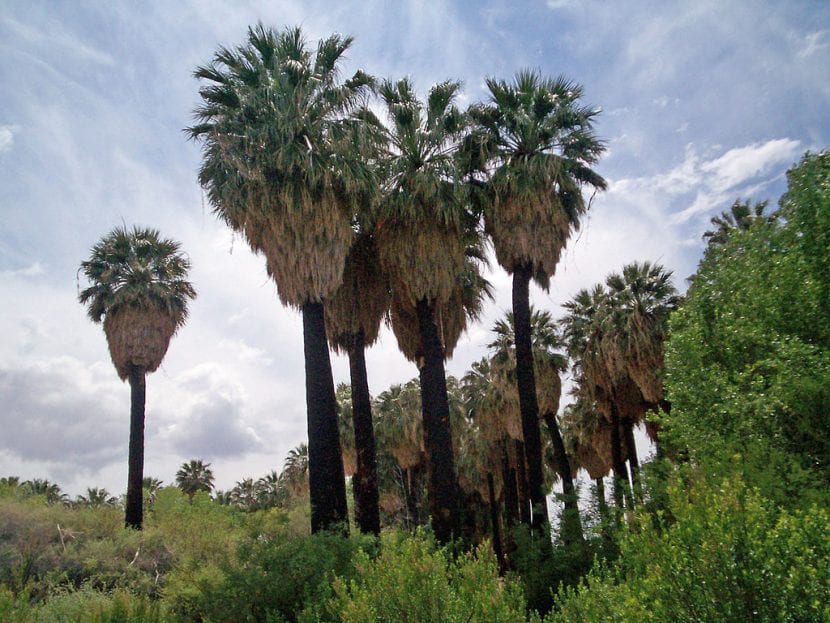
La Washingtonia will spin It is one of the species of palm trees that we find most in parks. Although he is not as popular as his sister W. robust Because it needs more space, it is just as easy to care for, and why not say so? Equal or prettier.
Its fan-shaped leaves and those filaments that come out of them make it one of the most interesting known plants to decorate. So if you are looking for a palm tree that resists drought and provides some shade ... this is one of your best options. Find out why.
Origin and characteristics
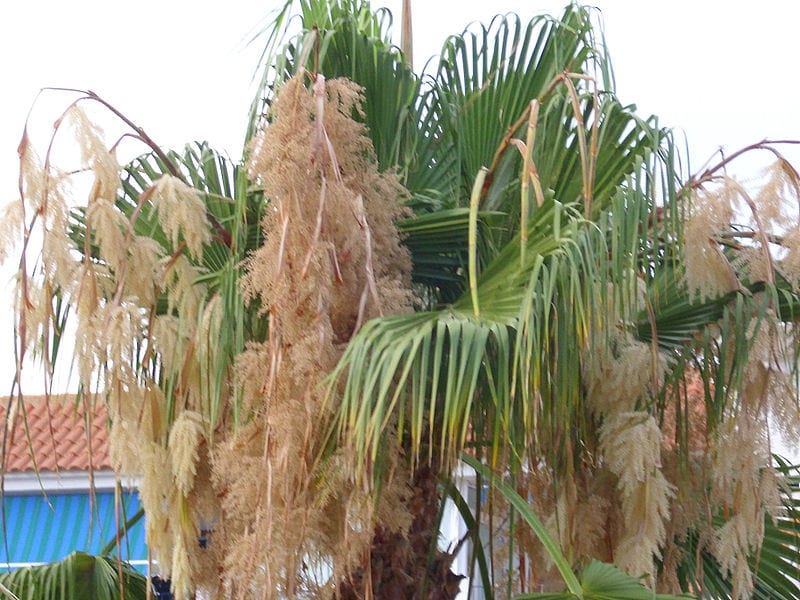
Image - Wikimedia / Javier Martin
Our protagonist is a palm native to the sub-desert areas of California and northern Baja California whose scientific name is Washingtonia will spin It is popularly known as California's Washingtonia, Washingtonia, or fan leaf palm. In good growing conditions can reach a maximum height of 30 meters, although the normal thing is that it does not exceed 20m.
It has a single trunk -it is a unicaule palm- that measures around 1 meter in diameter.. This is crowned by fan-shaped leaves from whose segments white filaments emerge. The flowers appear grouped in inflorescences in spring. And the fruit is elliptical or ovoid, blackish in color, measuring about 0,6cm in diameter.
What are their cares?
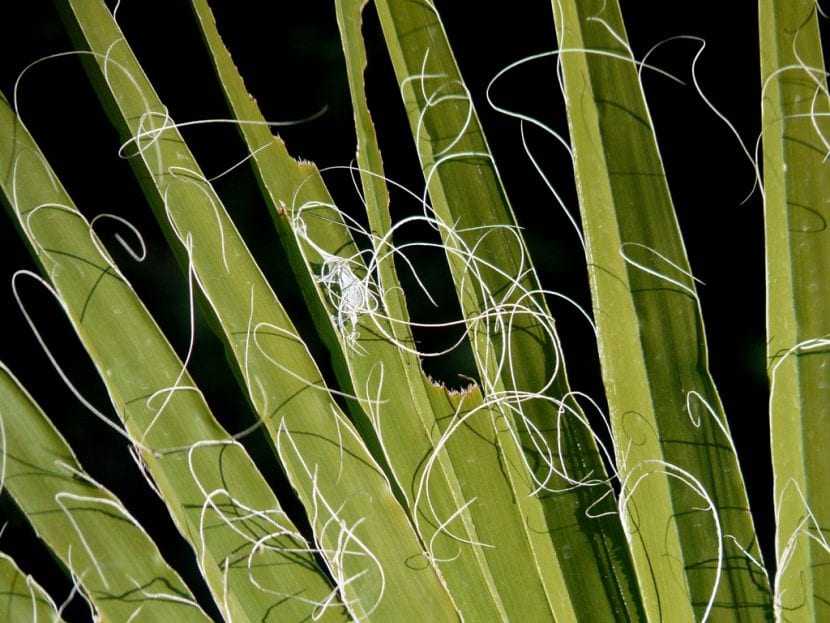
Image - Flickr / .Bambo.
If you want to get a copy, we recommend providing the following care:
Location
La Washingtonia will spin is a plant that it must be placed outside, in full sun. Due to its characteristics, it is important to plant it on the ground, at a distance of at least one meter from walls or walls.
Substrate or soil
Not demanding. Whether you want to have a few years in a pot or if you want to plant in the garden, you will not have to worry about the soil; in fact, in the first case you can simply use universal substrate (like this one from here for example) and in the second if the soil is calcareous or even slightly acidic (pH 6 or 6.5) there will be no problem.
Irrigation
Although it is a plant that resists drought quite well, if it is young or in a pot you have to water it 2 or 3 times a week in summer and a little less the rest of the year. In this way, you can be perfectly hydrated.
Subscriber
From the beginning of spring to the end of summer it is advisable to fertilize it with specific fertilizers for palm trees following the indications specified on the product packaging. In the case of being on the ground you can also add tea bags, egg and banana shells, or organic fertilizers such as guano (you can get it here).
Planting or transplanting time
In spring, when the risk of frost has passed.
Plagues and diseases
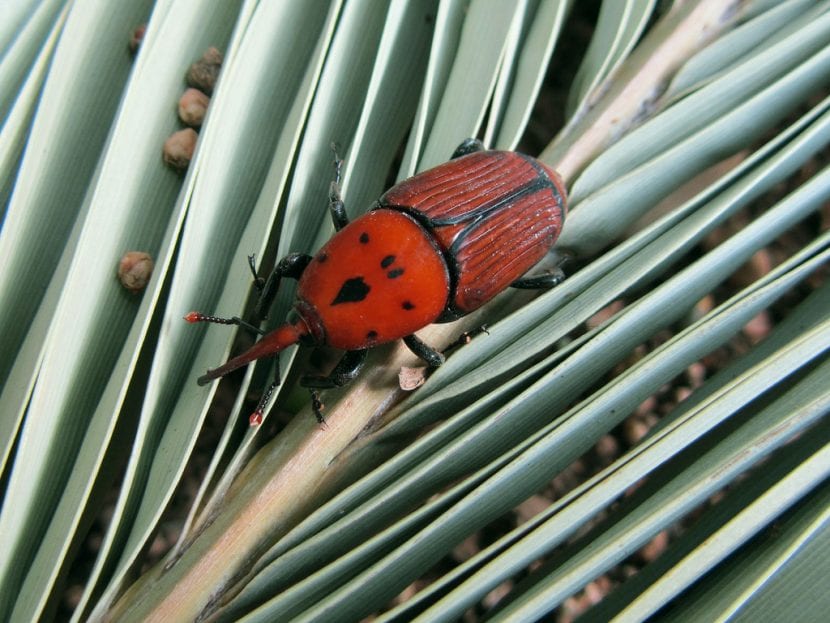
Red weevil
In general, they are very resistant plants, but especially in recent times their population is decreasing a lot due to insects, which are:
- Red weevil: its scientific name is Rhynchophorus ferrugineus. It is a weevil (it is similar to a beetle, only thinner) whose larvae excavate galleries in the heart of the palm tree. In doing so, from the outside what we see is the deviation of the central sheet. Perforations are also sometimes seen in the trunk, but what is most striking are the amount of fibers that the insect can remove from the interior of the plant.
The most effective treatment so far is preventive. Chlorpyrifos 48% insecticide applied during all warm months is the only really useful life saver out there. However, there are other home remedies that could work, which are those described in this article. - paysandisia archon: it is a moth that is very reminiscent of a butterfly whose larvae cause many problems for the palm tree. The symptoms it causes are similar to those of the weevil: weakening of the plant, arching of the eye (guide-leaf), perforations in the trunk, and also holes in the leaves that form a fan when they open.
The treatment is the same as in the previous case.
If we talk about diseases, overwatering or not using disinfected pruning tools could be affected by Phytophthora or pink fungus (Nalanthamala vermoesenii). In both cases, the leaves appear apparently fine, but if you pull them it is easy to remove them since the trunk or stem is rotten. To prevent them, you have to control the risks and disinfect the tools before and after using them. It is also highly advisable to do preventive treatments with fungicides that contain copper.
Multiplication

La Washingtonia will spin it multiplies only by seeds in spring or summer. The step by step to follow is the following:
- The first thing to do is put the seeds in a glass of water for 24 hours. The next day you have to discard those that have remained floating, as they will not germinate.
- Then a hotbed (pots, milk containers, glasses of yogurt, ...) with universal culture substrate mixed with 30% perlite (you can get it here).
- Next, it is watered and the seeds are placed in the seedbed so that they are a little buried. It is important not to put many in the same container, since most likely they will all germinate and, as a consequence, you will have problems later to separate them. It is best not to put more than 2 in a 10,5cm diameter pot.
- Finally, it is watered again and the seedbed is placed outside, in full sun.
The first seedlings will come out soon, after 1-2 weeks, but you have to keep them in their pots until they have at least two leaves.
Rusticity
Resists cold and frost up to -10ºC.
Where do you buy?
Despite being a fairly common plant, it is sometimes difficult to find it in nurseries. Therefore, the ideal is to look at online shops, since although there are places where they sell seeds, if you want to be completely sure that you are not cheating yourself, you must search online nurseries. Another option is to locate a specimen that is in the town or city and collect the seeds once they begin to fall from the plant.
What did you think of Washingtonia will spin?
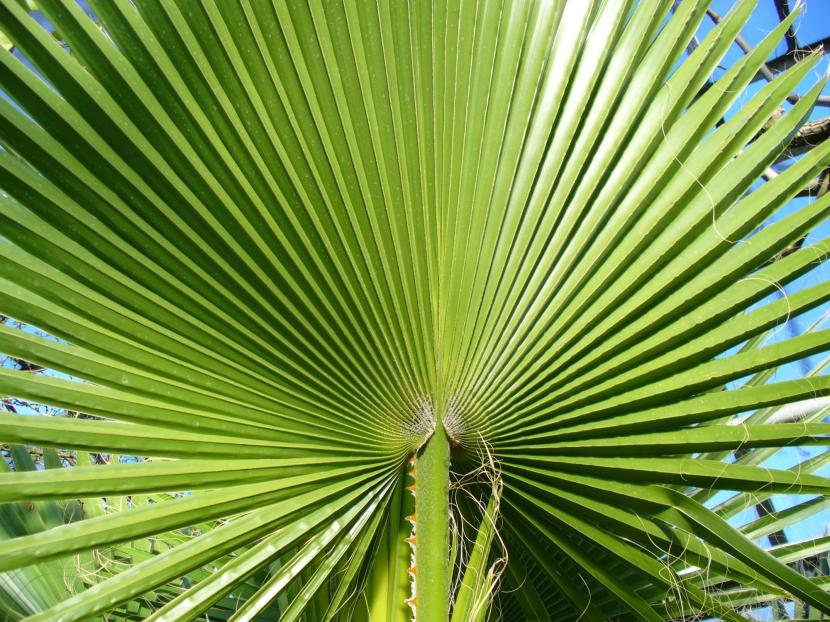
Hello, just comment that they are born all over the garden. Thanks
Hi John.
Yes, sometimes they are like a weed hehe
But you can easily tear them off by hand.
Greetings.